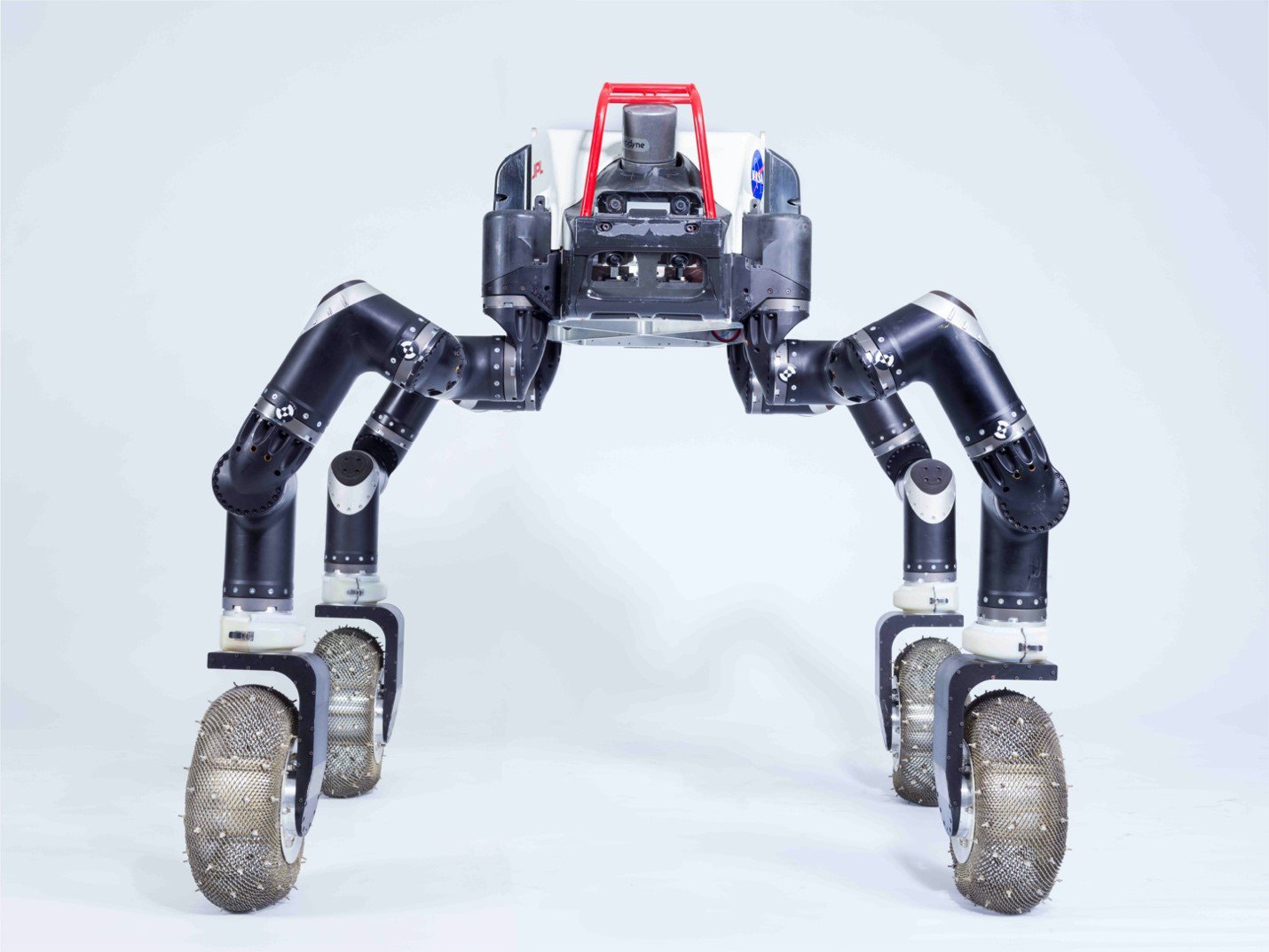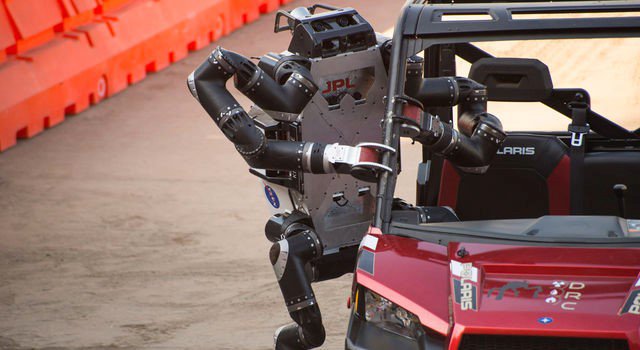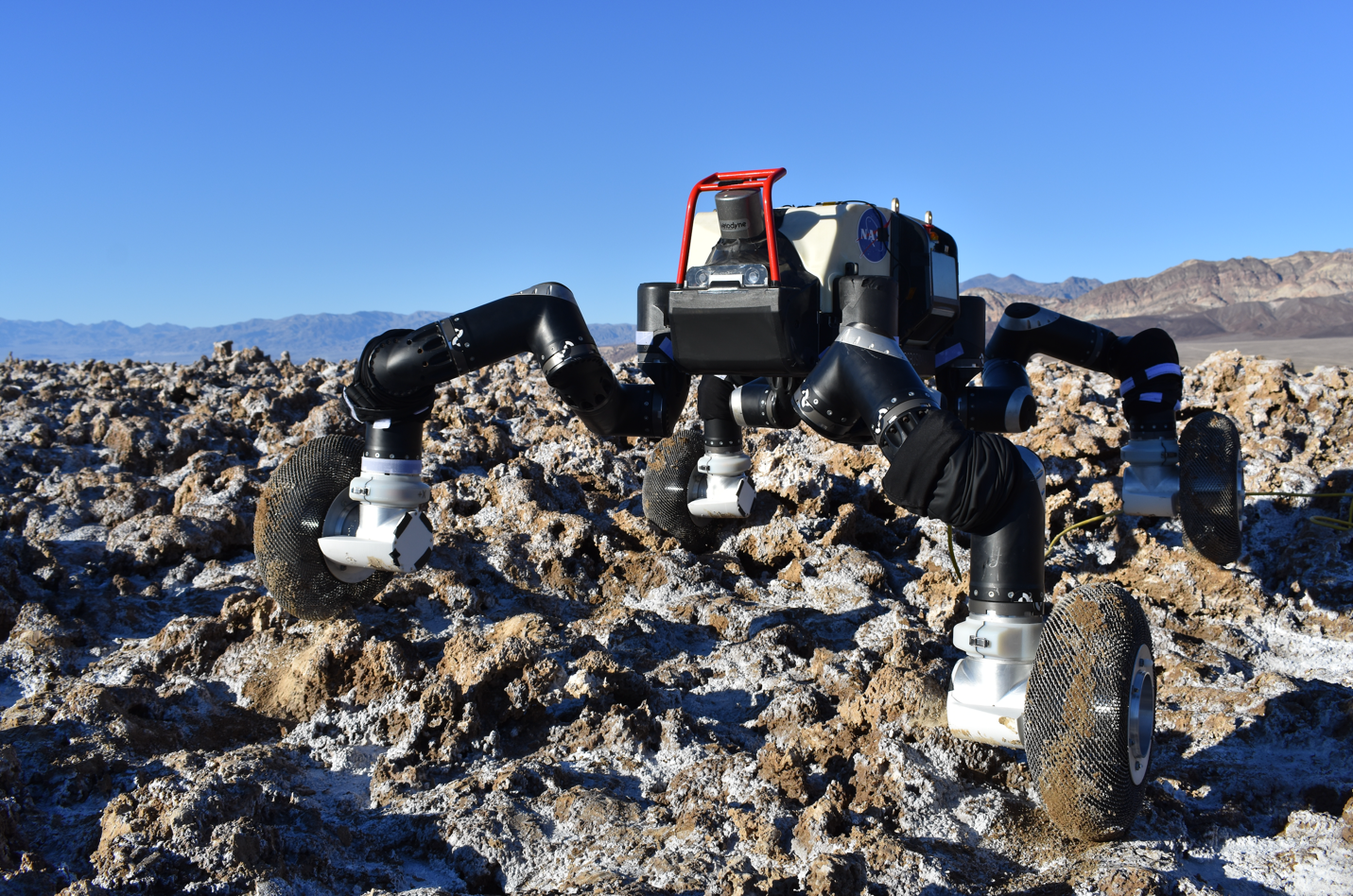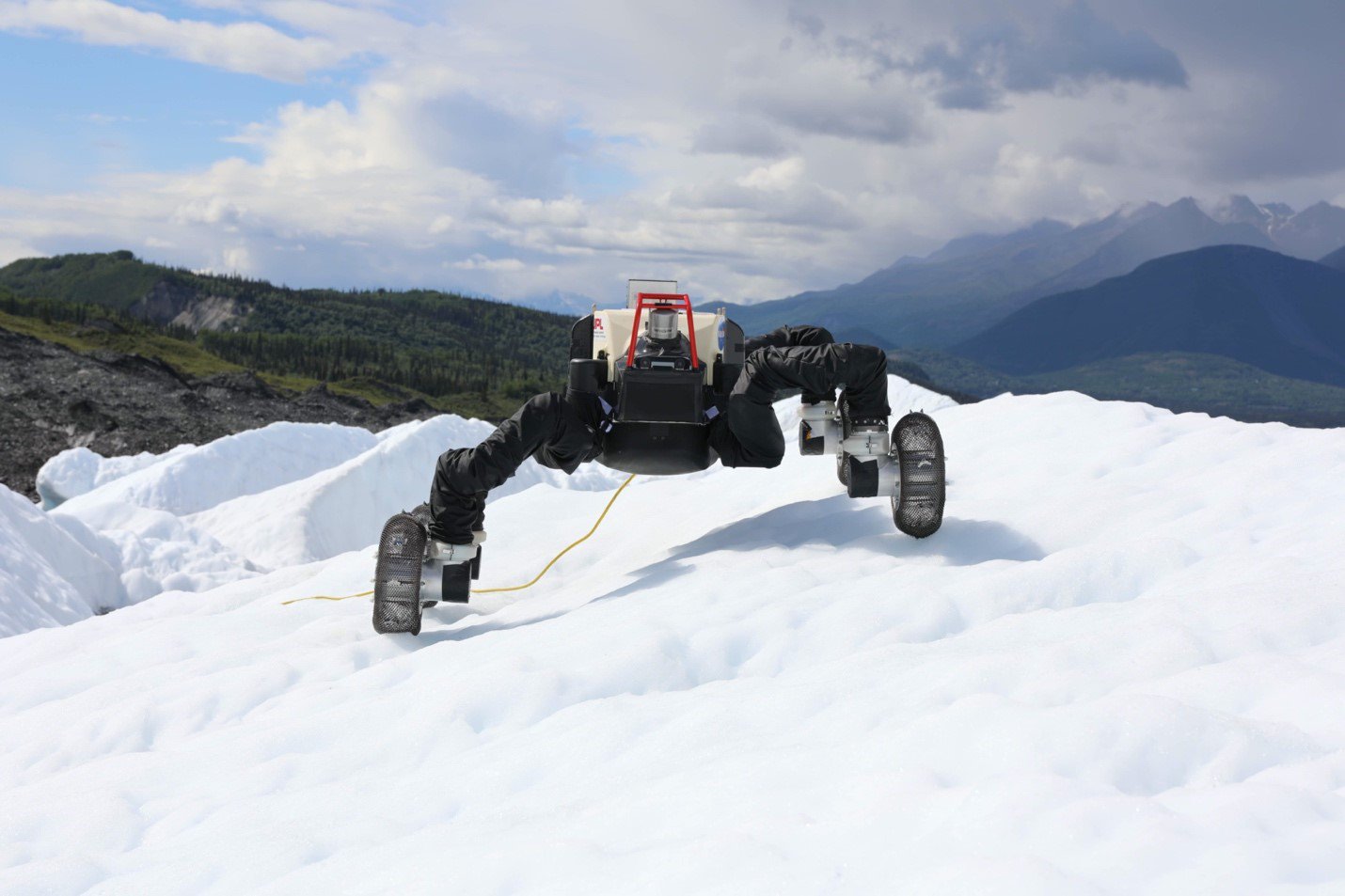


RoboSimian is a highly articulated research robot that has been used for a variety of mobile manipulation and planetary analogue mobility tasks. The platform is a quadruped with seven degrees-of-freedom (DoF) along each limb giving the robot a large amount of dexterity. It has a mass 120 kg and the ability to carry approximately 20 kg of payload.

The RoboSimian robot was originally designed as a mobile manipulation platform for the DARPA Robotics Challenge. The robot was used to perform critical tasks in a simulated disaster zone. During the DARPA Robotics Challenge RoboSimian successfully drove a car, opened a door, drilled a hole in a wall, flipped a switch, and navigated through a debris field.

As part of the ISTAR task, the robot was used to research autonomous spacecraft truss assembly techniques. RoboSimian was successfully used to demonstrate repeated construction of a ground-based modular truss structure by manipulating individual truss elements into place.

In its current form, RoboSimian is an actively articulated wheel-on-limb rover used to traverse unstructured planetary analogue terrain. Compared with conventional planetary exploration robots such as the Curiosity or Perseverance rovers, wheel-on-limb platforms may articulate their high-DoF limbs to actively morph their shape to terrain profiles, as well as change their center-of-mass position relative to wheel-to-ground contact points.
For mobility research, RoboSimian was adapted to include four driven wheels, giving it a total of 32 independently actuated rotary joints. Each RoboSimian wheel is a mesh-spring design, composed of 200 barrel-springs woven together to form a torus. This design is based on spring tires developed at NASA’s Glenn Research Center. Through extensive testing it has been demonstrated that these wheels have increased traction compared to the solid aluminum Curiosity rover wheels, and they are also robust to jagged rough terrain.
Robosimian has been used to determine effective mobility strategies for traversing Ocean World analogue terrain at a salt evaporite field in Death Valley, CA, and on glacier ice at Matanuska Glacier, AK. At both sites the robot executed repeated traverses over unstructured surfaces using a variety of mobility modes.